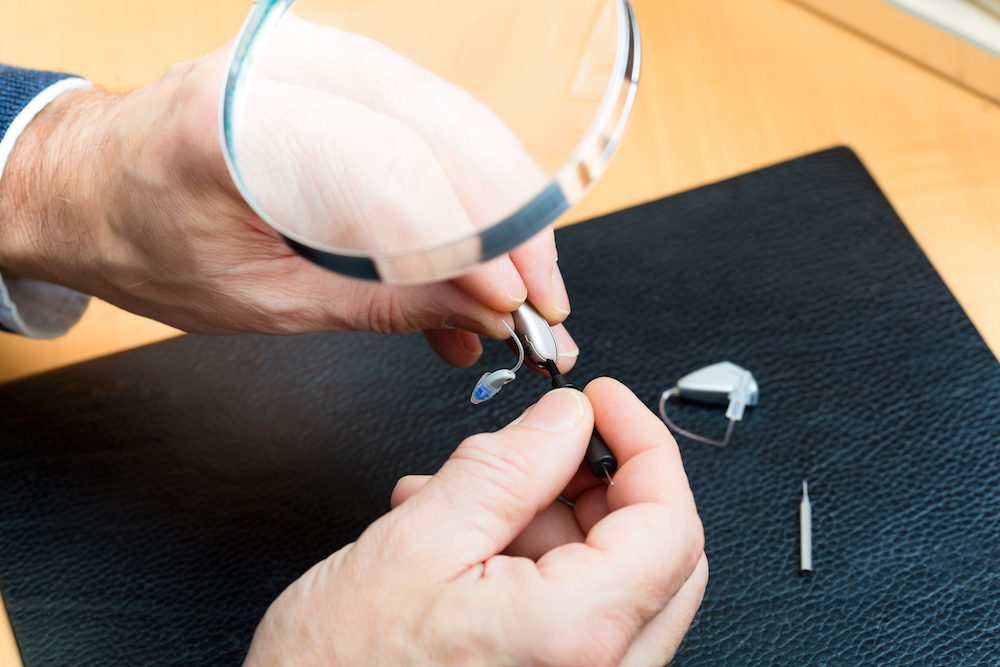
If you use hearing aids, it is vital that you take good care of them to ensure they work optimally and stay in good condition for as long as possible. This will ensure they last a long time and provide you with their intended results.
If you have been using hearing aids for a long time, you may find that you run into some problems. While hearing aids use excellent technology to help with your hearing and are built to last, on occasion, you may find yourself in need of a repair. There are different types of hearing aids, including in-the-ear (ITE), behind-the-ear (BTE) and in-the-canal (ITC) which means the type of problem and repair you need may differ.
It is important that if you discover a problem with your hearing aid, you take it to your audiologist for advice. You should do this as soon as you detect a problem, to ensure it does not get worse and you can get back to your lifestyle and comfortable hearing aid.
Here are some of the most common hearing aid problems and repairs.
Earmold
There can come a time when your hearing aid experiences wear and tear from long-term use, and no longer fits comfortably inside your ear. Alternatively, you may find that your hearing aid is not worn down, but just no longer fits. This may be caused by changes in your ear, which is perfectly normal as time goes on.
As you get older, the shape and size of your ears are subject to change, which can mean that your perfectly fitting hearing aid may begin to feel uncomfortable. This can typically feel like it is going to fall out, a little loose or you find it slips around more than usual.
With this particular problem, you will need to visit your audiologist for advice and the relevant repairs. They will be able to get to the root of the problem and will more than likely create a new earmold impression to get the new size and shape that will fit more comfortably for you.
Tubing
A common repair with hearing aids is to fix the issues that come with wax buildup. If you find that your hearing aid has become a little uncomfortable, sticky and the sound is different than usual, it may need cleaning or a replacement part. The production of earwax is normal and plays a vital role in protecting the ear canal from infection, and elements such as water.
It is also normal that, on occasion, your ear may produce more wax. Unfortunately, earwax can clog the connecting tube from the device to the receiver on the hearing aid, which needs to be clear and working properly for your sound to be clear.
Alternatively, you may find that the tube cracks, becomes discolored or no longer fits in the same way.
If you are experiencing this issue, you will need to take your hearing aids to your audiologist who can take a look for you. It could simply need clearing or could need a replacement tube.
Microphone
If you find that the level of sound you are experiencing has changed, there may be a problem with the microphone, for example, it is broken or has been damaged. The microphone in your hearing aid uses complex technology, so it is best that you take it to your audiologist who can send it to the manufacturer to repair or organize a replacement for you.
Casing
If you are experiencing a problem with the casing, such as damage or cracks, you will need to see your audiologist who can replace it for you. If the crack is not severe, and will not cause any safety issues, then it may be a simple repair. Unfortunately, the cracked casing is not something that can usually be fixed and instead, will need replacing. The casing can be cracked when it is accidentally stepped on or dropped.
Battery
In some cases, the battery compartment of the hearing aid will need to be repaired. This usually occurs when there has been a problem with a faulty or loose wire connection in the device.
If you are a regular hearing aid user, it can be helpful to know the common repairs. Hearing aids are specifically designed to be worn daily, so are subject to accidents and wear-and-tear. If you are experiencing any issues with your hearing aid, then you should contact your audiologist for more help.
To learn more about Natural Hearing Centers and how we can help you maintain your device, call us at (888) 221-9156 today.



